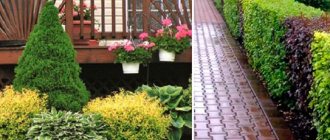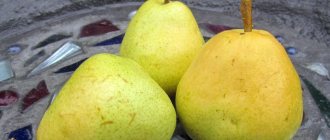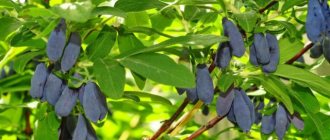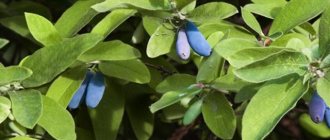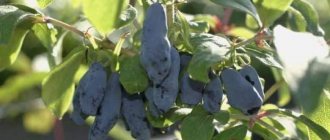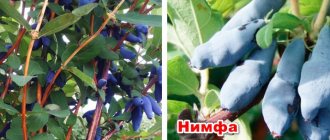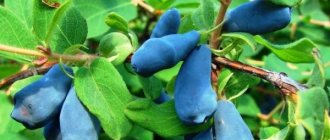7572
Decorative climbing honeysuckle, also known as German honeysuckle, is a deciduous shrub, the maximum size of which varies from 4 to 6 m. It has a wide growing area. Plants of this species are found in African jungles and in the forest-steppes of Central and Northern Europe. Among gardeners, it is valued for its spectacular inflorescences, the size of which reaches 5-6 cm in diameter, and active growth.
Landscaping of the green curtain
Botanical description
The most ancient and famous cultivated type of honeysuckle is Honeysuckle (translated as fragrant). This species blooms earlier than others, in June . Lonicera is an ornamental shrub that belongs to the honeysuckle family (Caprifoliaceae). Honeysuckle owes its Latin name Lonicera to Adam Lonicer (1528–1586), a German physician who was also a philologist, botanist, and the first to publish a herbalist (an ancient encyclopedia of plants).
Most often, this type of climbing honeysuckle was grown in the gardens of European countries. The honeysuckle genus includes up to 200 species of shrubs and vines, including crops with edible fruits. In gardening, preference is given to decorative creeping (weaving) species. At an early age, the shoots have a pistachio hue, later they become purple or brown.
Stems with dense dark green foliage rise up to a height of up to 6 m. Below, the foliage has a gray tint. The flowers are incredibly beautiful and very fragrant. The fruits are brightly colored and in climbing varieties they are often poisonous. A certain number of pairs of upper leaves on the growth (usually 12 pairs) are fused with the main part, creating an ellipse-shaped plate.
Description of culture
Ornamental garden honeysuckle is not a specific variety. The culture includes many forms that differ in appearance, frost resistance, and distribution area. Many of them are very decorative and enjoy the well-deserved love of landscape designers.
Plants are suitable for fencing a site, creating green groups, and highlighting garden areas. Climbing honeysuckle covers the arbors and arches. Ornamental bushes bloom from late May to mid-July. Closer to autumn, a scattering of small, often poisonous fruits appears on them.
Inexperienced gardeners who have planted a crop for the first time often have a question: how to distinguish edible honeysuckle from decorative one? After all, both species can grow on the site.
The garden form has oblong dark blue berries with a waxy coating. They ripen at the end of June. Landscape honeysuckle has small, round, dark red or black fruits. They are located in pairs and often grow together. In vines, the berries appear to be glued to the leaves due to the short stalk. Ripen in August.
Is it possible to eat decorative honeysuckle? No, the fruits of landscape forms are inedible. They are poisonous and can cause severe poisoning.
Attention. In central Russia, real honeysuckle or wolfberry often grows on the edges of forests and in groves. It cannot be collected. This plant with fragrant yellow-white flowers and brightly colored fruits is highly poisonous.
Landing rules
If you want to plant climbing ornamental honeysuckle on your site, you should carefully study the varietal characteristics of the plant. It is also important to determine the correct place for planting. The abundant appearance of flowers and fruits will depend on this. Prepare the holes and soil, plant the plant on time and provide proper care.
Deadlines
At the end of April, layerings of climbing honeysuckle are rooted in the open ground in the garden. In the fall, during October, seeds are sown and cuttings are carried out. Cuttings from the mother plant are planted in both autumn and spring.
Find out why young honeysuckle does not take root well and does not bear fruit.
Planting and propagation of honeysuckle
Honeysuckle propagates in all the classic ways typical of ornamental shrubs. In early spring, prepare large cuttings before the honeysuckle buds open. They take root in the soil within the first month with sufficient moisture and under a protective film.
The shrub can be propagated by layering in mid-summer, bending several young and strong shoots to the loosened soil. And shrubs from 6 years and older can be propagated by ordinary division, dividing the rhizome with pruners or a saw.
Selecting a site, preparing holes
Every gardener can grow a plant, regardless of his skill level; the main thing is to choose the proper place for growing, prepare planting holes and provide all conditions for care.
For planting, it is preferable to choose the side from the south. Light partial shade will not affect flowering and fruiting. If you plant the plant in a heavily shaded place, the growth will not slow down, the shoots will continue to spread, but the flowers will not appear as intensely. Climbing species grow in both light shade and sunny areas. Lianas climb well if the stems receive sunlight.
Since the flowers of decorative honeysuckle attract bees and other insects, the plant should be planted away from the gazebo where people sit to relax. Support structures for climbing varieties are best built and installed immediately before planting, so as not to damage the roots when the plant begins to grow. Obelisk supports look very attractive and impressive. They can be made from different materials: metal (the strongest and most reliable support), willow rods and wooden slats.
Did you know? You can grow a home bonsai from Japanese honeysuckle by properly forming and twisting the shoots.
Honeysuckle grows well in a variety of soil types, but like many other plants, it prefers well-drained, loose, humus-rich soil. Decorative honeysuckle does not like soils with predominantly sand and clay, as well as wetlands. Soils with a neutral alkaline reaction (pH from 5.5 to 8) are well suited.
Planting holes must be prepared in advance (2-3 weeks before planting), digging them to a depth of 30 cm . The diameter of each hole should be 30–40 cm, depending on the size of the root system. Broken tiles, bricks or pebbles are used as drainage. The holes are filled with organic substances: compost, peat, a small amount of coniferous tree bark and minerals - 20 g of nitrophoska per plant.
Selection and preparation of planting material
Saplings with an open root system can be 2-3 years old. They should have 2-3 shoots 40–50 cm long. You should pay attention to the appearance of the growths. There should be no dryness or bursting bark. They should bend freely. Peeling on the bark is possible - this is normal.
The roots of the plant should be free of signs of rot. The presence of several kidneys is mandatory. It is advisable to buy seedlings from trusted suppliers, nurseries or at garden exhibitions.
You need to get complete information about the plant from them:
- exact name of the variety;
- features of planting and care.
Find out how to properly plant honeysuckle seedlings in the ground in the spring.
Planting scheme
Honeysuckle is an unpretentious crop, but when planting it is necessary to follow all stages, without ignoring any of them. It should also be taken into account that the chosen location will be permanent, since honeysuckle is not replanted. It grows in one place for at least 20–25 years or more.
- Drainage material is placed in the prepared hole, enriching it with fertile soil and minerals.
- Pour water into the planting hole -5 liters.
- The seedling is installed so that the root collar is not level with the soil surface.
- Water the plant in stages so that water slowly fills the soil.
- Mulch the soil with compost, dry leaves or humus. The layer should be 4-5 cm.
Benefits of climbing honeysuckle for garden design
The buds of this crop consist of 8-10 elongated yellowish-red petals, curved outward. Cultivated varieties are grown in the Central and Southern regions of Russia. Due to low winter hardiness in Siberian conditions, bushes can freeze and become deformed.
Climbing honeysuckle has a number of advantages over other ornamental shrubs:
- Drought resistance, thanks to which the plant can withstand up to 6 days without watering at an average daily temperature of +25°C.
- Unpretentious in care, endurance, allowing the plant to do without additional feeding for a long time. During the season, climbing varieties are fed 2 times. During the period of active bud formation, the soil under the bush is watered with a 10% solution of nitrogen fertilizers. In autumn, the plant needs potassium mixtures; for this, the soil in the hole is mulched with rotted horse manure.
Wall of green honeysuckle
- Climbing honeysuckle has a high vegetative potential. Planting material of any type (layers, cuttings, part of a bush) takes root in a new place within a couple of weeks. At the same time, young seedlings do not require special care.
- It can grow even in the darkest corners of the garden. The lack of light does not interfere with the formation of bright, large buds and does not affect the general condition of the crown.
- It is characterized by rapid growth rates, providing the vine with an annual growth of 1.5-3 m, depending on the characteristics of the region of growth and the varietal characteristics of a particular specimen. If you use mullein as a fertilizer, the growth will be more intense.
- Long flowering period, which lasts from early June to late August. During the season, an adult shrub sheds up to 1000 flowers.
- The average lifespan for climbing honeysuckle is about 50 years.
- Resistance to soil diseases and garden pests.
Among the disadvantages of this type of honeysuckle are low frost resistance, due to which the plant freezes at temperatures below -25°C even under a thick layer of snow. Gardeners living in the northern regions of the country can acquire flowerpots. Bushes planted in them will decorate the area in the summer, and in the fall they can be sent to the veranda, wrapped in several layers of insulation. The best option for Siberian winters would be a heated greenhouse, in which the plants will not be exposed to low temperatures and gusty winds.
Rules of care
The first time after planting honeysuckle, regular watering is needed. This is the main stage of care, guaranteeing success in the initial stage of plant growth. It is very important to keep the soil evenly moist. A good layer of mulch applied after planting will prevent water from evaporating from the soil at a rapid rate.
If the honeysuckle crop grows in fertile soil, fertilizers will be practically not needed. Flowering can be stimulated by applying low-nitrogen fertilizers in the spring.
Did you know? The honeysuckle culture with flaky bark was popularly called “shameless.”
Climbing varieties require only maintenance pruning. It will be necessary to cut off mainly dead, weak and too long shoots in the spring.
Honeysuckle care
Honeysuckle is quite unpretentious in care, and there are almost no special secrets that differ from other garden crops. With proper care, flowering and fruiting begin quite early - at the beginning of summer, and soon the edible varieties can be harvested.
Temperature
Winter-hardy varieties of honeysuckle easily tolerate low temperatures, some of them even down to -50 degrees. Flowers cope well with spring frosts, but winter thaws sometimes lead to harmful early awakenings.
Lighting
Choosing the right location is one of the main points necessary for the fast and healthy growth of a plant. Honeysuckle loves well-lit, sunny places without strong winds or drafts. But some varieties prefer shaded areas - be sure to check this in advance.
Watering
High-quality regular watering is the basis for the active and rapid growth of honeysuckle. In nature, it often grows in wetlands, so it requires a large amount of moisture, especially during flowering and fruiting. On average, non-daily watering requires about one and a half buckets of water per bush.
Fertilizers and fertilizing
For the first few years, honeysuckle, planted in properly selected soil, does not require additional feeding. It is enough to fertilize an adult plant once every 2 years with organic mixtures in the second half of autumn. In the spring, before the buds open, introduce ammonium nitrate or urea solution.
Trimming
For the first 2-3 years, the young shrub only gains strength and does not need pruning. In the future, it will only be needed for molding or if individual shoots grow too densely and quickly. Sometimes the need for the first pruning arises only in the 7-8th year - and this is absolutely normal for honeysuckle.
Harvest and storage
When the berries turn blue, which usually happens in early June, you should not rush to pick them. You need to wait at least a week for full ripening. There are varieties that quickly crumble when ripe. Then you can put a film on the ground so that they do not get dirty when they spontaneously fall off, and the remaining harvest can be removed not manually, but by shaking off the fruits.
Place the fruits carefully; they wrinkle quickly. It is better to use a flat container. The berries do not last long, even in the refrigerator, about 5–7 days. It is better to freeze them immediately, you can dry them, prepare compote, puree or jam for the winter. To be consumed fresh, the berries are ground with sugar in a 1:1 ratio.
Description of the plant
The plant is named for the shape of the tallest leaves, located just below the flowers - their bases are fused and form a green “plate”, which is “pierced” by the stem. In its natural state, this species is found in the Caucasus and the Middle East, and due to its relatively high frost resistance, it easily grows in our gardens.
The ornamental plant honeysuckle (Lonicera caprifolium), also called honeysuckle, belongs to the most popular representatives of this species. A showy climbing shrub with seasonal foliage that grows quickly and vigorously.
Morphology:
- Escapes . The bush has a fairly rapid growth rate (growth is about 1 meter per year), reaching a height of 3-4 meters. Its advantage lies in its low expansion - the plant wraps around the support, but does not produce root shoots, so it does not grow much to the sides. The branches (even young ones) are bare, which distinguishes them from other honeysuckles.
- Leaves. Green shiny leaves appear on thin, flexible shoots, growing in groups of 2 opposite each other. The leaves are broadly elliptical, with a short petiole, 4-10 cm long. The tallest leaves grow together to form a saucer hugging the stem (an important feature that distinguishes honeysuckle from other types of honeysuckle). On the underside, the leaf blades are bluish-greenish, bare.
- Flowers . The main decorative value of honeysuckle is its numerous flowers that develop at the turn of May – June. Flowers grow 1-2 per stem in the axils of the tallest leaves. Honeysuckle flowers are 4-5 cm long, often cream-colored, sometimes pink, and smell very pleasant. The Anna Fletcher variety blooms with yellow flowers, the more popular Inga produces creamy pink flowers with a pleasant vanilla aroma, especially intense in the evenings.
- Fruit. At the end of summer, the bushes produce fruits that ripen in September. Since September, the bush has been decorated with rounded orange fruits on a green “bowl” consisting of fused leaves, attracting birds to the garden. These fruits are not poisonous, but inedible - in large quantities they can cause stomach problems.
Photo. Honeysuckle honeysuckle fruit
Attention! Honeysuckle flowers are very toxic! They have a sweet taste, but contain toxic xylotein; ingestion of the flower can lead to severe poisoning and coma.
Reproduction methods
Honeysuckle can be propagated in 4 ways:
Important! Propagation by seeds does not preserve the varietal properties of the plant.
- Seeds . Gardeners describe this method as the longest, because... The first flowers can be seen in 4-5 years.
- By cuttings . They are immediately planted in light soil for rooting in a shaded place. If there is no greenhouse on the site, and it is in it that it is easiest to maintain high humidity, the cuttings can be covered with cut plastic bottles without a lid. Flowering will begin a couple of years after planting.
- By layering . The easiest way. A prerequisite for such propagation is the presence of annual shoots in the plant. It happens that during the winter they freeze slightly and it is not possible to use this method.
- Dividing the bush . An easy method, suitable for propagating plants no older than 5 years.
Care - basic rules and tips
Despite the unpretentiousness and undemanding nature of the plant, care for decorative honeysuckle is still needed. The culture is very responsive and will reward you with lush foliage and long-lasting flowering for your care.
Watering and fertilizing
The ornamental plant should be watered moderately. The shrub does not really like stagnation of water in the roots. Only Honeysuckle requires abundant moisture during flowering.
Advice. In rainy and cool summers, it is enough to water the crop once a month, adding a bucket of water under each bush.
The plant is not fed for 2 years after planting. The food brought into the hole is enough for him. Starting from the third year, 25 g of ammonium nitrate is scattered on the snow under each bush, and after hiding, a bucket of humus is sealed.
It is better to take complex fertilizers for decorative honeysuckle, with a high content of potassium and phosphorus, since nitrogen promotes the growth of vegetative mass to the detriment of flowering. In late autumn, 100 grams of ash are added to each bush. The substance alkalizes the soil and saturates it with potassium.
With weak growth and poor development, foliar feeding with ammonia and phosphorus-potassium fertilizers will be useful. Young plants respond well to spraying with Zircon, Epin or Immunocytophyte.
Dry fertilizers are scattered in the root zone or dissolved in a bucket of water and watered at the root. Then the soil is carefully loosened and mulched. The event retains moisture and in the summer prevents overheating of the roots.
If the vine does not bloom
Why doesn't decorative honeysuckle bloom? There may be several reasons. The main ones:
- early age of the vine;
- the plant is planted in an open place where it freezes or is dried out by cold winds;
- improper pruning;
- not a winter-hardy variety;
- poor shelter;
- flower buds are exposed to spring frosts.
If the plant has suffered from powdery mildew and lost a leaf, you may not expect flowering next year.
Diseases and pests
Disease resistance is high. The only pest you should be wary of is aphids; they suck the juices from the leaves. To attract insects like ladybugs and lacewings - natural enemies of aphids, dill, cumin or coriander should be planted near honeysuckle.
For serious control of aphids, insecticides are used:
- “Actellik” - 1 ampoule of the product is diluted in 1.5 liters of water and 1 bush is treated;
- “Aktara” 0.2% - 30–50 ml of the product is diluted in 1 liter of water and 250 ml is poured under each bush.
Planting in open ground
Honeysuckle is not difficult to plant and grow; it is important to choose a suitable place for it in the garden.
Landing site requirements
Honeysuckle will withstand winter frosts if provided with a quiet, warm position in the garden. The climbing vine of honeysuckle requires stable support, for example:
- mesh with large cells;
- alcove;
- pergola;
- grille attached to the wall.
If honeysuckle needs to be planted next to a wall, you need to choose a truly sunny wall - this plant blooms most profusely in full sun, although it can tolerate partial shade.
Honeysuckle does not like stagnant water and extremes such as very dry sandy or very heavy loamy soils.
In general, honeysuckle requirements for soil are quite modest:
- it grows well in any neutral or slightly alkaline soil;
- the soil needs to be sufficiently moist, but not wet;
- The high humus content in the soil promotes abundant flowering.
Attention! The soil near the wall is always dry, so honeysuckle planted in such a place requires increased watering.
Landing - step by step
In stores and garden centers, honeysuckle is usually available as container plants. Seedlings grown in containers can be planted throughout the growing season, but it is worth considering the planting zone and how quickly frosty days will arrive in the fall.
When to plant honeysuckle? Due to incomplete frost resistance, this type of honeysuckle should not be planted in open ground in the fall. The best time to plant honeysuckle honeysuckle is spring. Like other spring-planted shrubs, it will require plenty of water until established, but due to its spring planting date, there will be much less risk of it freezing in the winter.
It is better to plant honeysuckle on a cloudy day, preferably immediately after rain.
Landing progress:
- We dig a hole. If the bush is planted near a wall, dig a hole 25-50 cm from it. If we want to use honeysuckle to cover a fence, we plant the plants at intervals of about 1 meter.
- The soil should be carefully dug up and loosened; it is worth adding peat, well-rotted manure or compost to improve moisture holding capacity.
- Before planting the shrub, install supports on which the honeysuckle rises, so as not to damage the roots later.
- We place honeysuckle seedlings in the pits. We place them 5-10 cm deeper than they grew in pots.
- We compact the soil and water it.
- After compacting the soil and abundant watering, we tie the shoots to the support.
- It is worth covering the soil around the bush with bark to reduce water evaporation.
The most popular varieties
Gardeners prefer some of their favorite climbing varieties:
- Cream Cloud , a loach plant, will fit perfectly into the decoration of any vertical weaving surfaces. Flowering will last for 90 days; canes are grown up to 3 m in height. The buds have a beautiful pink hue, exuding a honey aroma. The variety is unpretentious.
- Drema is an evergreen liana-like shrub. Flowering will last from mid-summer to mid-autumn. The flowers are dark burgundy in color, and the fruits are red with an orange tint (inedible).
- Summer King is a liana-like plant that amazes the eye with its unusual shape of inflorescences and fragrant aroma. The buds are a delicate peach shade. The height of the weaving shoots reaches 3 meters.
- Lola is a vine adorned with beautiful flowers and decorative foliage.
- Grape yellow, orange - climbing vines. Climbing vines twine around vertical objects. Plants are indispensable in landscape design. The flowers are white with a pink tint and yellow. The berries are inedible.
Gardeners also love filamentous honeysuckle, which grows to a height of 2 to 4 m and has reddish-orange flowers that exude a honey-spicy aroma. The abundant flowering of honeysuckle climbing crops is pleasing to the eye. The plant covers vertical structures with greenery. By growing honeysuckle in your garden, you can enjoy the fragrance of flowers all summer and the first months of autumn. And by planting varieties with edible berries, you can obtain excellent raw materials for preparing many dishes.
Description of types and application
When choosing a plant variety, they are guided only by aesthetic preferences, because all varieties quickly get used to new living conditions.
- Liana-shaped honeysuckle . Commonly called curly. In gardening, this plant is often used for zoning or landscaping. Liana-shaped decorative honeysuckle grows up to six meters in height, blooms throughout the summer, the fruits ripen in early autumn.
- Honeysuckle Honeysuckle . A Swedish scientist put forward the idea of calling this variety Honeysuckle. The lush bush blooms with neat pink flowers. The pleasant smell of this honeysuckle spreads throughout the garden. Honeysuckle is loved by butterflies. The variety is divided into subspecies; the most beautiful is considered to be “Graham Thomas” with cream flowers.
- Brown's honeysuckle . Thick leaves are combined with bright inflorescences and give unique beauty to the site. The inflorescences are both orange and red. There is no strong smell, just a light unobtrusive aroma. Brownie honeysuckle blooms in June and August.
- Bush honeysuckle . It is most famous among other varieties because it is not only decorative, but also edible. In gardening, this plant is used to decorate paths in the area. The purple fruits are edible.
- Altair . This is a subspecies of bush edible honeysuckle. The fruits are blue or purple. This plant is suitable for those who do not like to take care of the garden and rarely think about it. Altair is unpretentious, so even an inexperienced person can grow it. This honeysuckle blooms already in May, and the fruits ripen by June.
- Honeysuckle Royal . A delightful variety with delicate pink flowers. Royal honeysuckle is also a subspecies of bush honeysuckle. The leaves are green with a bluish tint. This plant is used for zoning as a hedge.
- Tatarian honeysuckle . This variety is unpretentious, but begins to bloom only three years after planting. Flowers are white, cream, pink or plum. Honeysuckle is frost-resistant and not afraid of drought.
- Blue spindle . Gardeners still fell in love with this species due to its resistance to harsh conditions. Grows up to one and a half meters. Since this variety was discovered in Siberia, Blue Spindle can withstand frosts down to -45 degrees. Edible fruits ripen in the fourth year from planting; the berries are blue-black in color.
- Honeysuckle Morena . "Morena" means "brunette" because the berries of this honeysuckle are dark and fleshy. The berries begin to ripen by the end of June; on average, 2.5 kg are harvested from one bush. Due to its attractive crown, this variety is also used in landscape design.
- Cinderella . The bush barely grows to half a meter in height. The crown of honeysuckle consists of straight protruding branches. Fruits with small dark blue berries. Cinderella ripens in June. The fruits contain a lot of vitamin C, sugar and pectin. For an abundant harvest of this honeysuckle, timely watering and spraying is required.
- Blue bird . This variety grows up to two meters. It begins to bear fruit three years after planting, already in the first week of June. This variety is tied so that the branches grow upward.
- Pride of Bakchar . This variety was discovered relatively recently - in 2006 in Siberia. The berries of this Honeysuckle are large, growing up to four centimeters in length. Thin branches bend due to the weight of the berries, so the fruits often fall off. They should be collected daily. The berries ripen only in mid-summer.
- Nymph . According to gardeners, this variety wonderfully combines unpretentiousness with the taste of the fruit. The nymph is grown in all climatic conditions; the bush begins to bear fruit by the end of June.
Differences between edible and inedible honeysuckle
- Edible honeysuckle is a bush up to one and a half meters high. You may not notice the flowering, the main thing is the bright blue berries. The first fruits ripen at the end of spring, so by summer there will be something to eat.
- Inedible Honeysuckle is often decorative; it is also found as a vine and a bush. Its flowering is more abundant than that of edible honeysuckle, and the shades of the fruit are both red and orange. Among the inedible plants there are also poisonous ones.
How to distinguish honeysuckle
It is not at all difficult to distinguish plants from each other; the berries of edible honeysuckle are blue, elongated and fleshy, and grow singly. The inedible berries are round, red in color, and grow in pairs. Sometimes the inedible ornamental honeysuckle is called wolfberry.
Using honeysuckle in terrain design
Designers fell in love with honeysuckle because of its easy adaptation to new living conditions and beauty. The plant lives for more than one year, and feels wonderful even in the most difficult conditions.
This plant is often used for zoning areas and landscaping gazebos and arches.
Honeysuckle is combined with small coniferous trees, as well as with ground cover roses and fruit trees: hawthorn and cherry plum.
The plant is planted either along the fence or on the border of the asphalt path and the ground. When honeysuckle grows, the crown is formed by pruning.
Previously, we talked about a neat, low-growing plant - Gardenia.
